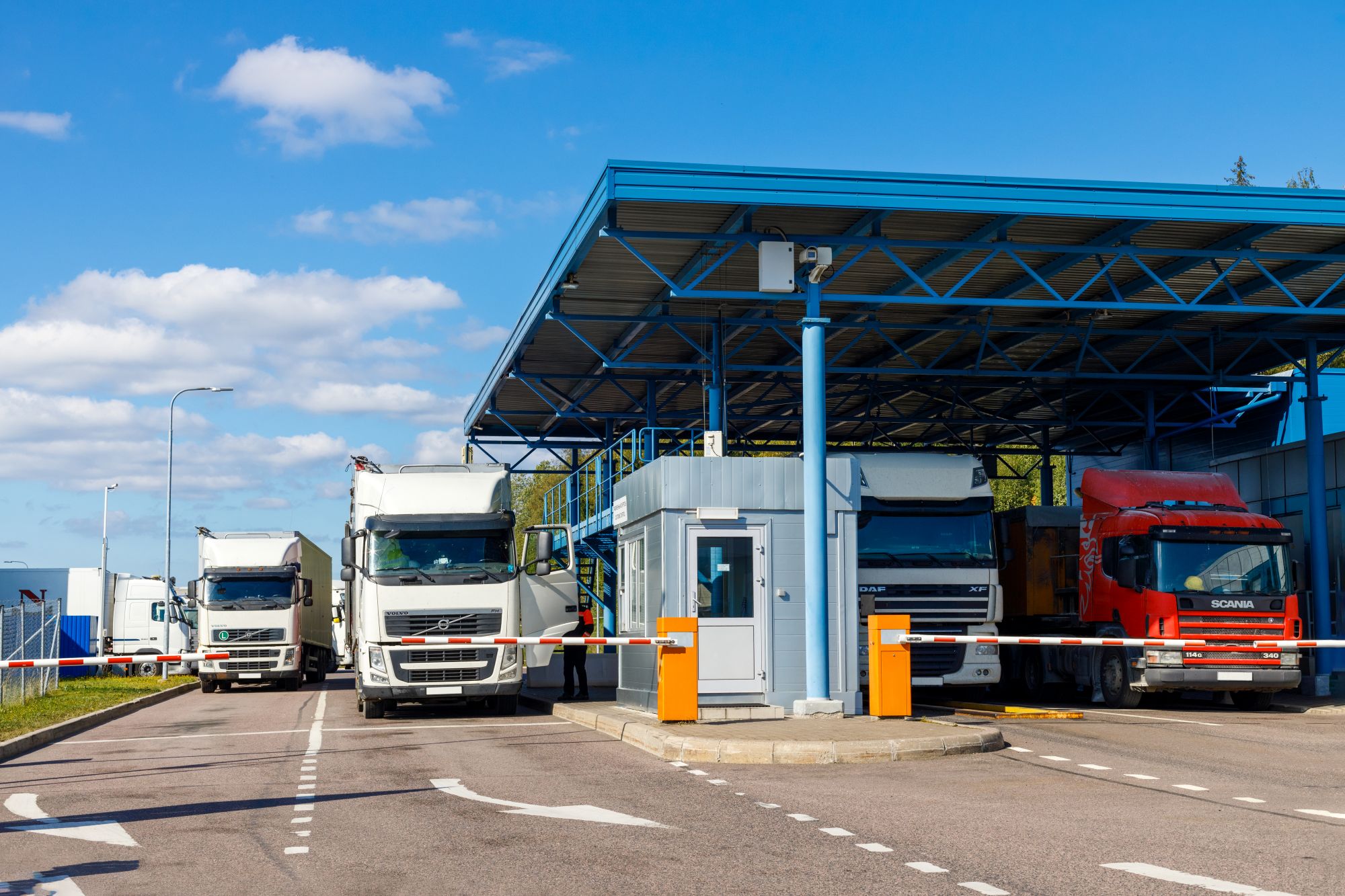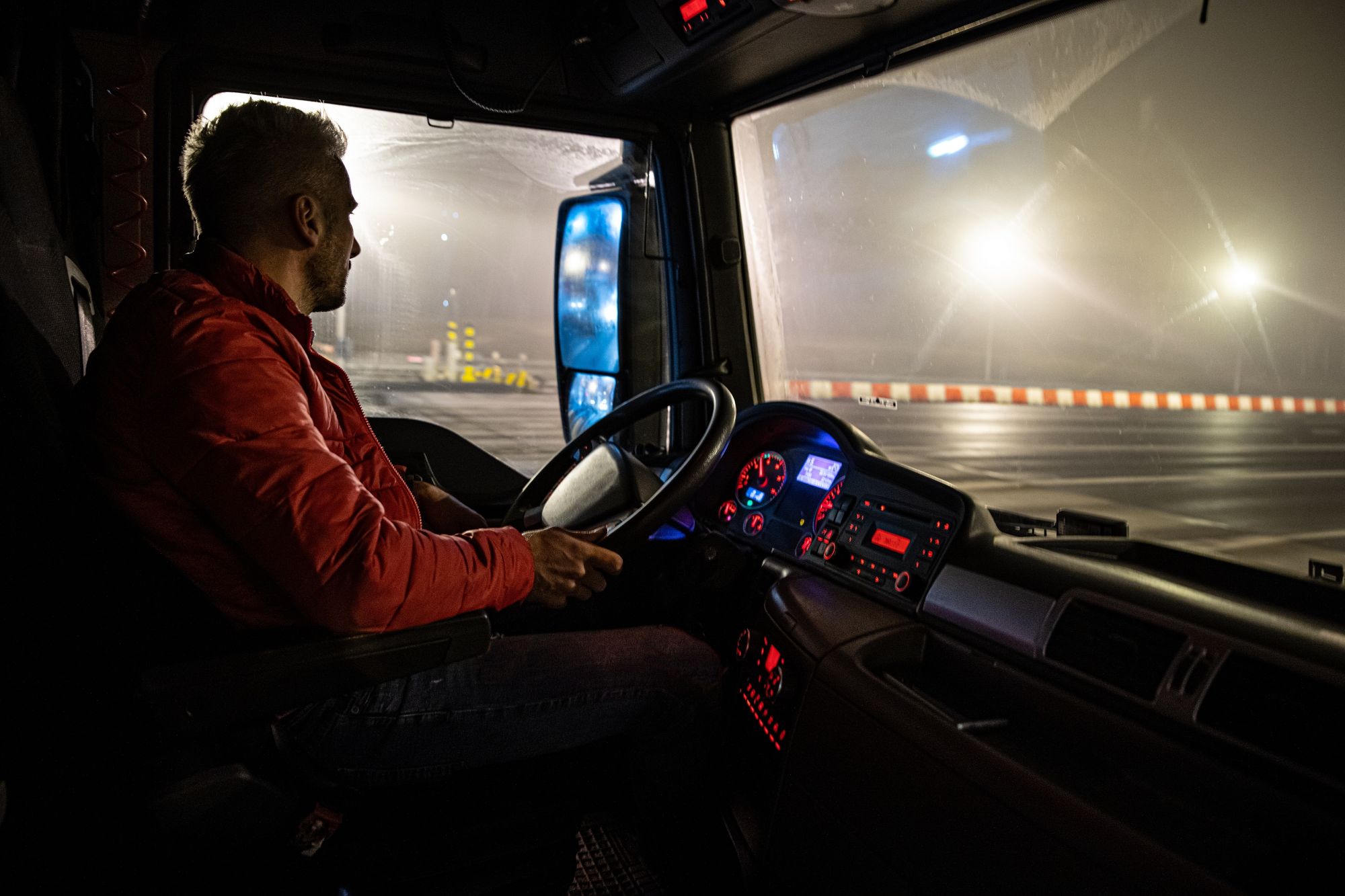
Guest
Vėl atidaroma Lenkijos ir Ukrainos siena: Ką turi žinoti transporto priemonių parko operatoriai
Sukurta: 18-06-2025
•
Atnaujinta: 20-06-2025
Po kelis mėnesius trukusių sutrikimų krovinių vežimas tarp Lenkijos ir Ukrainos vėl vyksta laisvai. Tačiau įtampa vis dar tvyro ir visi galvoja apie atsinaujinusių blokadų grėsmę, todėl transporto priemonių parko operatoriai turi išlikti budrūs ir pasiruošę apsaugoti vairuotojų gerovę abiejose sienos pusėse.
Šiame straipsnyje paaiškinama, kas lėmė sutrikimus, kaip jie paveikė vairuotojus ir kokių veiksmų galite imtis, kad sumažintumėte jų poveikį, jei vėl prasidėtų streikai.
Kas lėmė 2024 m. Lenkijos ir Ukrainos sienos blokadą?
Situacija prasidėjo 2023 m. pabaigoje, kai Lenkijos sunkvežimių vairuotojai pradėjo protestuoti prie pagrindinių sienos perėjimo punktų. Jie teigė, kad dėl ES sprendimo panaikinti Ukrainos vežėjams leidimų reikalavimus - įvesto kaip laikina karo meto priemonė - plūstelėjo pigesnių vežėjų, kurie lenkė Lenkijos įmones.
Protestai dar labiau sustiprėjo, buvo užblokuoti pagrindiniai krovinių vežimo į Ukrainą keliai ir tūkstančiai transporto priemonių įstrigo kilometrines eiles. Per patį blokados įkarštį pasienyje įstrigo daugiau kaip 5 000 sunkvežimių, kai kurie jų laukė ilgiau nei savaitę, kad galėtų kirsti sieną. Ne Ukrainos ES vairuotojai taip pat patyrė ilgus vėlavimus, įtemptus grafikus ir prastas sąlygas.
Iš pradžių kilęs logistinis ginčas peraugo į platesnį Lenkijos sunkvežimių vairuotojų protestą dėl importo iš Ukrainos, patekimo į rinką ir skubių ES transporto priemonių poveikio. Netrukus prie jų prisijungė ir Lenkijos ūkininkai, nusivylę Ukrainos žemės ūkio produktų poveikiu vidaus kainoms.
Lenkijos vairuotojai taip pat kritikavo Ukrainos elektroninę eilių sudarymo sistemą, taikomą sienos kirtimo punktuose, vadinamą "eCherha", teigdami, kad dėl jos ES vežėjai atsidūrė nepalankioje padėtyje. Nors sistema buvo sukurta siekiant supaprastinti krovinių judėjimą, leidžiant vežėjams iš anksto rezervuoti sienos kirtimo vietas, Lenkijos vežėjai teigė, kad ji Ukrainos įmonėms suteikė daugiau lankstumo ir greitesnį patekimą į šalį. Dėl kalbos barjerų, ribotos integracijos su ES logistikos sistemomis ir nenuoseklaus įgyvendinimo daugelis ES vairuotojų ilgiau laukė pasienyje, o tai dar labiau sustiprino nesąžiningo elgesio įspūdį ir prisidėjo prie platesnių neramumų.
Lenkijos ir Ukrainos sienos blokados laiko juosta
2023 m. lapkritis: Protestai prasideda Dorohusko, Hrebenės ir Korčovos pasienio punktuose.
2023 m. gruodis: Užblokuojama daugiau perėjų, įskaitant Medyką; eilėse žūsta trys ukrainiečių vairuotojai.
2024 m. sausis: Lenkijos vyriausybė susitaria sustabdyti blokadą iki kovo mėn.
2024 m. kovas-balandis: Atsinaujina pavienės mažesnių perėjų blokados.
2025 m. gegužė: Prasidėjo nauja keturių mėnesių blokada Jahodyn-Dorohuske, bet teismas ją atšaukė.
2025 m. birželis: Visi pagrindiniai sienos kirtimo punktai tebėra atviri, tačiau išlieka būsimų sutrikimų rizika.
Ką Lenkijos vyriausybė daro, kad pagerintų padėtį?
Reaguodama į sutrikimus ir platesnes jų pasekmes, Lenkijos vyriausybė ėmėsi aktyvios pozicijos. Pasienio perėjos su Ukraina buvo pripažintos ypatingos svarbos infrastruktūra, todėl jos labiau apsaugotos nuo būsimų blokadų ir padeda užtikrinti nenutrūkstamą krovinių, humanitarinės pagalbos ir karinės paramos srautą.
Taip pat buvo įsteigta nauja Bendradarbiavimo su Ukraina taryba, kuri apskritai stiprina abiejų šalių ryšius. Dalis jos įgaliojimų - gerinti prekybos ir transporto koordinavimą. Kartu Lenkija investuoja į rytinių sienų infrastruktūrą ir bendradarbiauja su ES pareigūnais, siekdama išsireikalauti sąžiningesnių sąlygų Lenkijos vežėjams. Nors šie veiksmai gali neišspręsti padėties per vieną naktį, jie rodo ilgalaikį įsipareigojimą siekti stabilumo ir struktūrinio dialogo.

Poveikis vairuotojams
Blokada sudarė nepriimtinas sąlygas profesionaliems vairuotojams. Daugelis jų dienas ar savaites praleido savo kabinose, neturėdami galimybės naudotis tualetais, maistu ar tekančiu vandeniu. Kai kurie įstrigo šaltyje be šildymo ar pastogės.
Blokavimo laikotarpiu žuvo trys ukrainiečių vairuotojai, manoma, kad prie to prisidėjo išsekimas ir negydomi sveikatos sutrikimai.
Be to, sutrikimai sukėlė didelę psichologinę ir emocinę įtampą, ypač Ukrainos vairuotojams, kurie karo metu bandė pasiekti namus ar grįžti iš jų. Vėlavimai turėjo įtakos ne tik prekybai, bet ir degalų, pagalbos ir karinių prekių, svarbių Ukrainos nacionalinei gynybai, judėjimui.
Nors Lenkijos protestuotojai tvirtino, kad humanitarinės ir karinės pagalbos transporto priemonėms buvo leista kirsti sieną, Ukrainos valdžios institucijų pranešimai rodo, kad taip buvo ne visada.
Šios sąlygos ne tik traumavo vairuotojus, bet ir atskleidė automobilių parko rizikos valdymo ir avarijų planavimo spragas. Dabar operatoriai turi vertinti sienų sutrikimus kaip nuolatinę grėsmę.
Ką turi žinoti automobilių parko operatoriai
Nors padėtis stabilizavosi, esminė įtampa tarp Lenkijos vežėjų, Ukrainos operatorių ir ES politikos vis dar neišspręsta. Transporto priemonių parko valdytojai, dirbantys šiame regione arba netoli jo, turėtų būti budrūs dėl tolesnių protesto akcijų galimybės, ypač sezoninio spaudimo metu arba ES politikos peržiūros metu.
Čia pateikiamos SNAP komandos rekomendacijos, kaip veiksmingai valdyti situaciją:
1. Stebėti padėtį Lenkijos ir Ukrainos pasienyje
Sekite Lenkijos ir Ukrainos logistikos asociacijų ir vyriausybinių šaltinių naujienas. Prenumeruokite perspėjimus apie eismą pasienyje ir sekite patikimus logistikos partnerius, kad gautumėte naujausią informaciją realiuoju laiku.
2. Planuokite lanksčius maršrutus
Turėkite nenumatytų atvejų planų, pagal kuriuos transporto priemonės būtų nukreipiamos per Vengriją, Slovakiją arba Rumuniją, jei vėl būtų blokuojami pervažiavimai tarp Lenkijos ir Ukrainos.
3. Parama vairuotojo gerovei
Užtikrinkite, kad sunkvežimiuose būtų būtiniausių daiktų: maisto, vandens, maitinimo elementų ir medicininių priemonių.
Neramumų laikotarpiu labai svarbu turėti saugią sunkvežimių stovėjimo aikštelę Lenkijoje, kad jūsų vairuotojai būtų saugūs, pailsėję ir nekliūtų į kelią. Aprūpinkite vairuotojus naujausia informacija apie saugias sunkvežimių stovėjimo aikšteles ir poilsio vietas jų maršrute.
Mūsų [intruck programėlėje] (https://intruckapp.com/) yra interaktyvus sunkvežimių stovėjimo aikštelių žemėlapis su 11 000 sunkiasvorių sunkvežimių paslaugų teikėjų visoje Europoje, įskaitant Lenkiją, Vengriją ir Slovakiją. Tai paprasta naudoti priemonė, padedanti rasti saugias sunkvežimių poilsio aikšteles Lenkijoje, todėl ji ypač vertinga pramoninių streikų metu.
Nors šiuo metu programėlė nesiūlo užsakomų sunkvežimių stovėjimo vietų Ukrainoje, Ukrainos vežėjai ir vairuotojai gali naudotis "intruck", kad rastų patikimas poilsio stoteles ES, kai važiuojama dideliais atstumais arba kai yra trikdžių.
4. Užsisakykite saugias sunkvežimių stovėjimo aikšteles Lenkijoje
Sutrikimų metu paklausa padidėja, todėl labai svarbu iš anksto užsisakyti bilietus. Vairuotojai taip pat gali naudotis "intruck", kad iš anksto rastų ir rezervuotų patikimą sunkvežimių stovėjimo aikštelę Lenkijoje. Nesvarbu, ar jūsų transporto priemonės keliauja gilyn į Rytų Europą, ar grįžta į vakarus, tai leidžia vairuotojams naudotis sunkvežimių stovėjimo aikštelėmis netoli Varšuvos ir kitų intensyvaus eismo vietų.
5. Reguliariai bendraukite su vairuotojais
Sudarykite registracijos tvarkaraščius, ypač jei tikimasi ilgo laukimo ar persėdimų. Užtikrinkite vairuotojus, kad jų gerovė yra prioritetas, ir suteikite paramą, jei jie susiduria su netikėtais vėlavimais. Jei įmanoma, iš anksto pasiūlykite saugias sunkvežimių stovėjimo vietas Ukrainoje, kad vairuotojai žinotų, kur galės pailsėti.
Žvelgiant į ateitį
Lenkijos-Ukrainos sienos atidarymas - džiugi žinia Rytų Europoje veikiantiems laivynams. Tačiau, kadangi politinė įtampa neišspręsta, būtina būti pasirengusiems.
"Situacija sparčiai keičiasi, - sako Nickas Rentonas, SNAP Europos strategijos ir verslo plėtros vadovas. "Atsižvelgiant į tai, kad Lenkijos ir Ukrainos pasienyje gali kilti dar daugiau neramumų, rekomenduojame automobilių parkų operatoriams parengti patikimus planus, kuriuose pirmenybė būtų teikiama vairuotojų gerovei ir kuo labiau sumažinta veiklos rizika. Tai apima lankstumo užtikrinimą pristatymo grafikuose, būtiniausių atsargų tiekimą transporto priemonėse ir galimybę vairuotojams naudotis saugia sunkvežimių stovėjimo aikštele.
"Mūsų rezervuojamų sunkvežimių sustojimo vietų tinklas visoje Europoje ir Lenkijoje suteikia jums įrankių, kad galėtumėte išlikti lankstūs - ir operatoriams, ir vairuotojams, kai sąlygos kelyje tampa nenuspėjamos."
Peržiūrėkite mūsų interaktyvų žemėlapį saugi sunkvežimių stovėjimo aikštelė Lenkijoje šiandien.



